
25 minute read
Culture
WHERE ART AND LIFE MEET
IKÉ UDÉ: NOLLYWOOD PORTRAITS NATIONAL MUSEUM OF AFRICAN ART THROUGH FEBRUARY 28, 2023
The success of Nigeria’s film industry has also meant the rise of glamor and celebrity in what is called Nollywood. Enter Iké Udé, who returned to Lagos in 2014 after three decades as an artist in New York City, to photograph the leading stars, often in costumes from their films, as well as directors and producers in the $3 billion industry. The result reflects the changing nature of African identity in the 21st century.
PRESTON SINGLETARY: RAVEN AND THE BOX OF DAYLIGHT, NATIONAL MUSEUM OF THE AMERICAN INDIAN THROUGH JANUARY 29, 2023
Pacific Northwest soundscapes, music and projects accompany a major show at the National Museum of American Indian by Tlingit glass artist Preston Singletary. Organized by the artist with the Museum of Glass in Tacoma, Washington, the show tells the tribal story of Raven and his transformation of the world by bringing light to people from the stars, moon and sun.
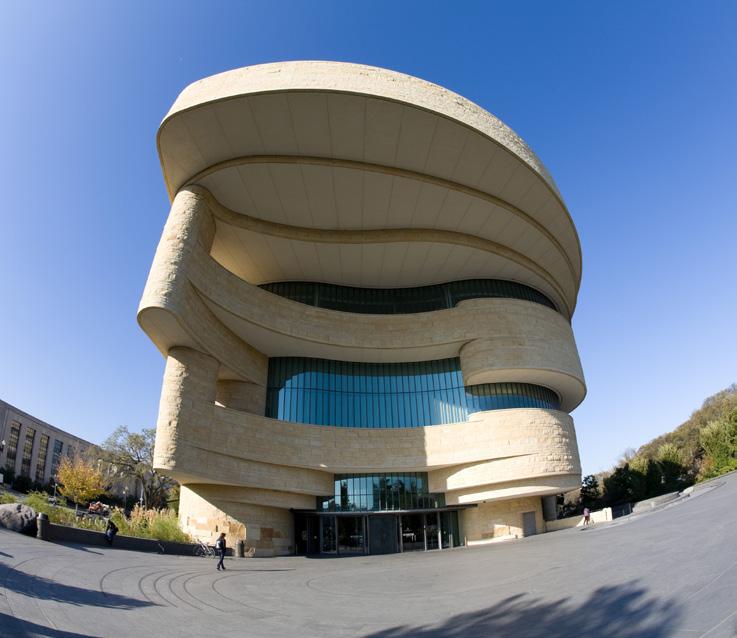

199 AFRICA

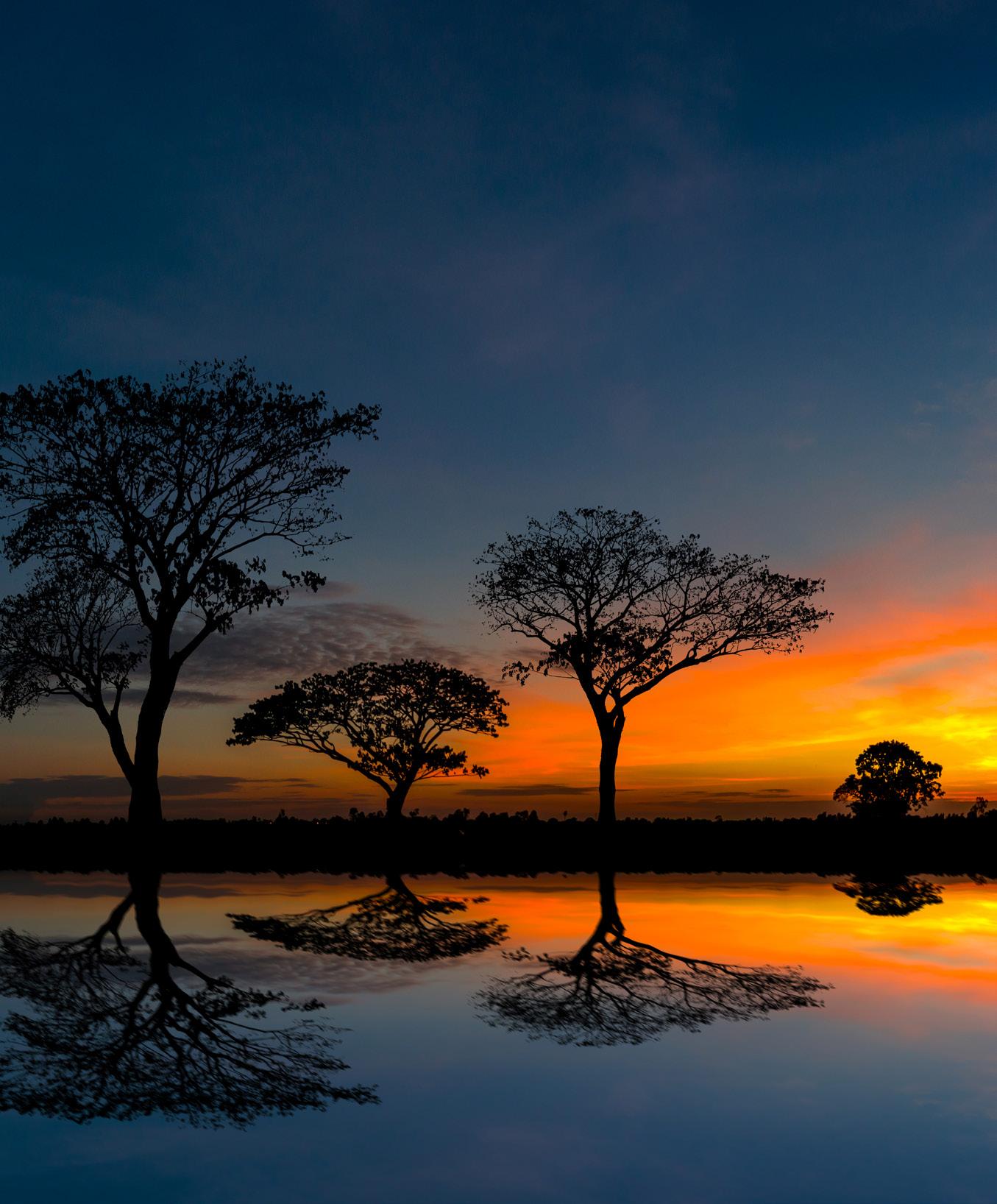
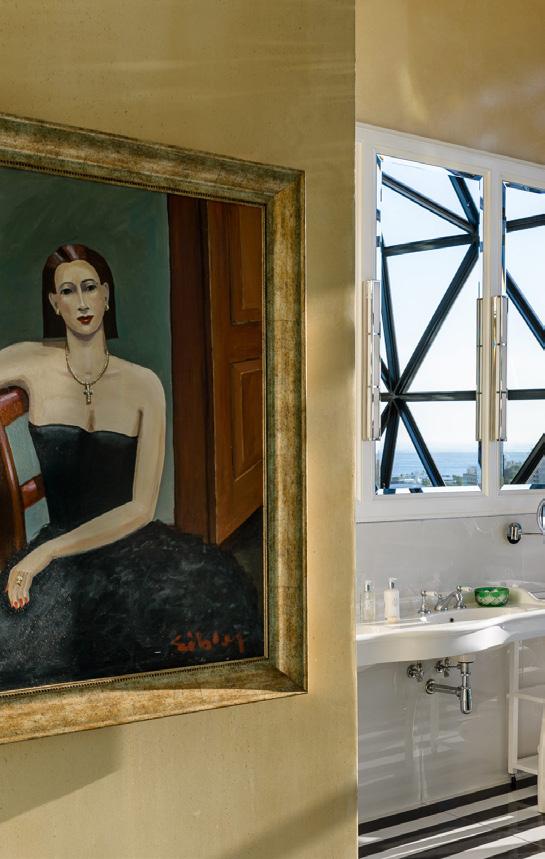

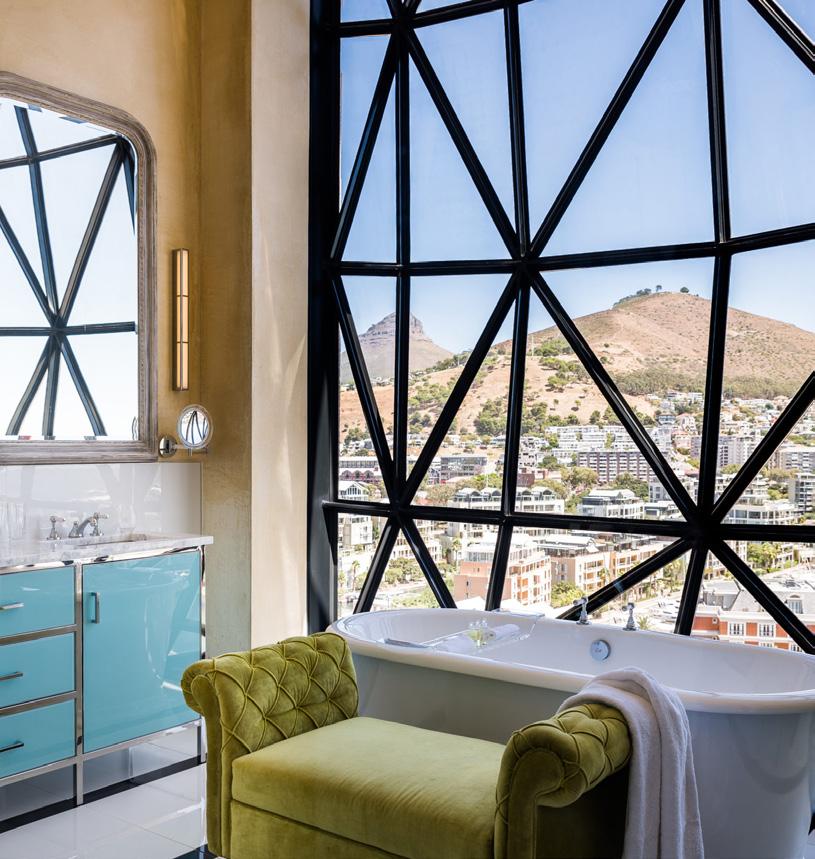

From the start of my most recent journey to Cape Town, I considered many carriers but decided on Qatar Airways. Qatar is all about the Q Suites. What exactly is a Q Suite one might ask? Simply put, it’s your private space at 38,000 feet above earth.
Arriving onboard, I am greeted personally by the most attentive and well-polished steward and stewardess. Yes, I use those old school terms because…it takes me back to an era of glamour which thanks to Qatar is here again. I am offered the most extensive dining and wine menus to order any items I wish during the flight. Oh, and there is no set mealtime; it’s whatever, whenever I feel like it. I notice that the amenities are not just amenities -- it is none other than an exclusive collection of creams and perfume by Dyptique of Paris. All I can say is Mais bien sur. Pj’s and slippers for the flight are issued to me in my size along with French champagne to start the journey just right. I sink back into my comfy space, shut the door, and gaze through the windows. I know this is going to be epic.
I decide it’s dinner time, so I select the sea bass with forbidden rice paired with the perfect Premier Cru by Louis Latour. I swoon. I tell you this was the absolute best fish I have had anywhere on the globe! And that’s saying a lot for airline food. For me, the alchemy of travel is superb cuisine, sensational wine, and an exciting destination. It just doesn’t get any better than this.
Upon arrival in South Africa, I am greeted by my driver and whisked away to Cape Town’s latest luxury residence at the waterfront - The Silo. This is a property with a pedigree as part of the Royal Portfolio collection. (The Royal Portfolio includes the stunning Private Residences just outside of the city on the ocean, La Residence in South Africa’s wine country, Royal Malawane in the Greater Kruger National Park, and Birkenhead House in Hermanus.) The Silo, once an historic grain mill, is now an ultra-chic, imaginative space occupying the top six floors of the South African modern Art Museum. With its mixture of antique mill equipment – suspended from the ceiling of the lobby lounge – to its walls adorned with contemporary art, and its suites – most of them two-story duplexes and dazzling Penthouses – it is simply a mecca for design aficionados.
My journey takes me on safari. If there’s one thing and one place you should not miss experiencing, its safari in Africa. While there are many fabulous places go in Africa, each with its own unique features and distinct charm, on this trip I explored Sir Richard Branson’s Ulusaba in the Sabi Sands.
Branson, as we all know, is an out-of-the-box thinker and ultimate doer. From his music label to air and cruise lines, to even space ventures, he raises the bar. But he is also the owner of some extraordinary guest properties worldwide. His penchant for exclusivity and edgy design takes us to his most exhilarating project - Ulusaba in South Africa.
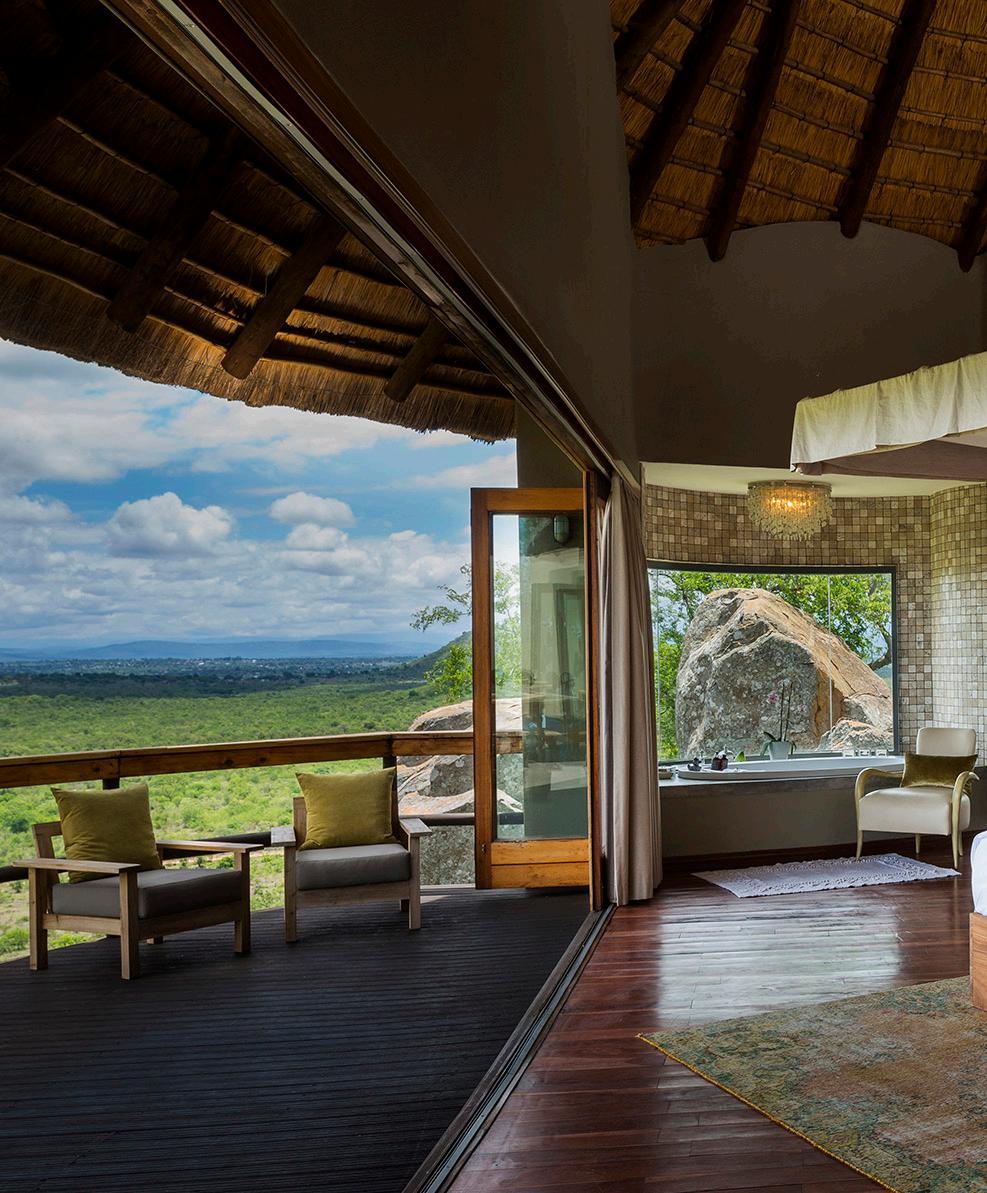
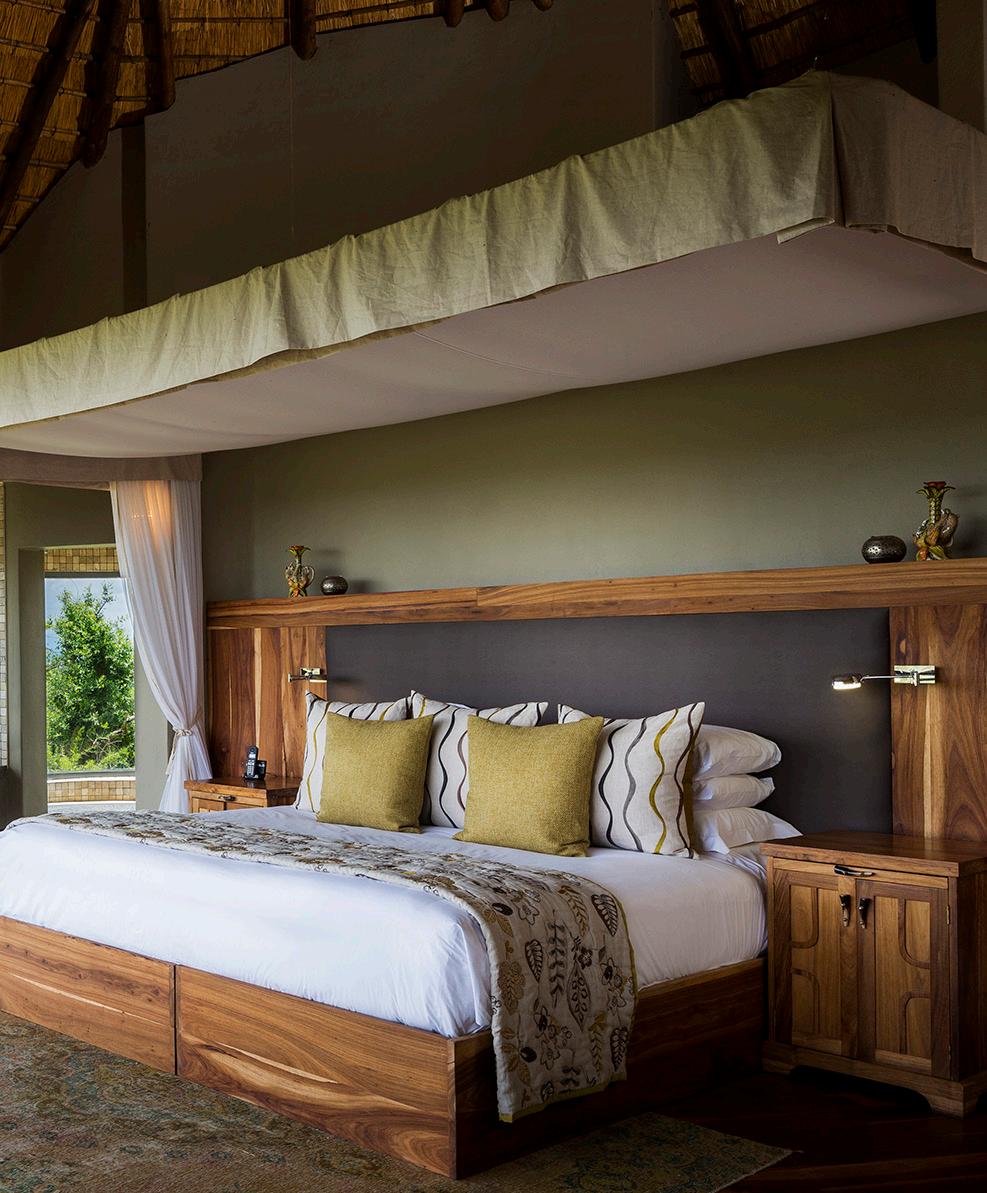

Ulusaba’s prime position along the Sabi and Sand Rivers makes it the best place to see the Big Five in style. Whether you stay at his Rock Lodge, perched high on granite mountains with sweeping landscape views, or anchor yourself at its Safari Lodge, on the ground level right smack at the watering hole, to view game face-to-face while having a meal al fresco, you will be mesmerized every minute of every precious day and night.
Next is a quick overnight at the only address I currently recommend in Johannesburg - The Saxon. Nestled in the Beverly Hills-esque neighborhood of Sandhurst, with its gorgeous tree-lined streets, each resident occupies a compound fit for a king and queen. The Saxon is no exception and is a secret yet sprawling hideaway in the midst of this distinguished postal code. No wonder A-Listers and dignitaries flock here. The hotel is haven to exceptionally spacious suites among lush gardens, a magnificent Zen like spa which is a destination itself, and yummy dining options. Why didn’t I book a longer stay? Saxon, I will return.
Back on safari I take a short flight to Madikwe. This is a curious location in the Northern Cape of South Africa near the border of Botswana. A different topography. It’s off the beaten path, less traveled, and has less of a footprint, which makes for more wildlife exhibiting different behavioral patterns. These creatures are unaccustomed to crowds so its natural and unspoiled.
My stay takes me to Dithaba, part of the Madikwe Safari Lodge. Dithaba is intimate with just four private units each complete with plunge pool, fireplace, bespoke personalized service and delicious fresh cuisine. I love their special touches, like the offering of hot lemongrass-soaked towels to guests upon returning from game drives. There are many elements that would beckon me to revisit Dithaba, but the heart, soul, and thoughtfulness of the staff makes the stay feel more like you are surrounded by close friends. It is what has me dreaming of going back and soon.
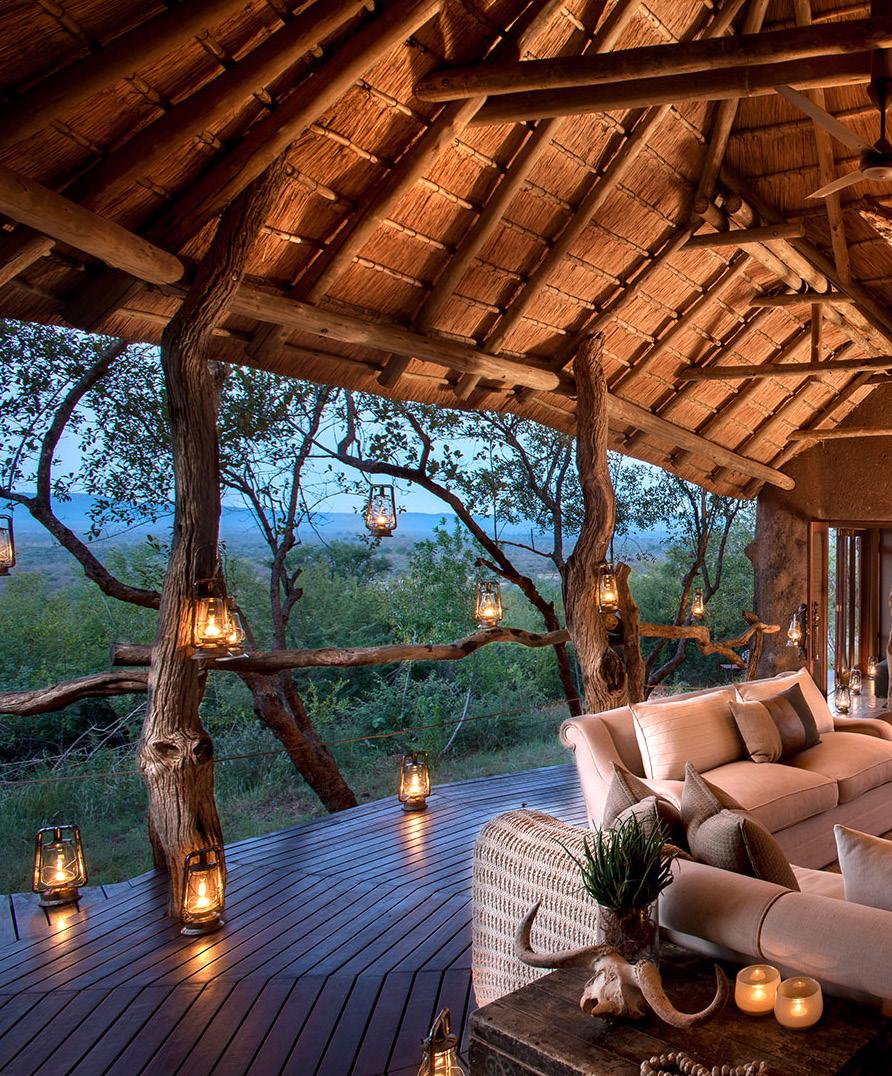


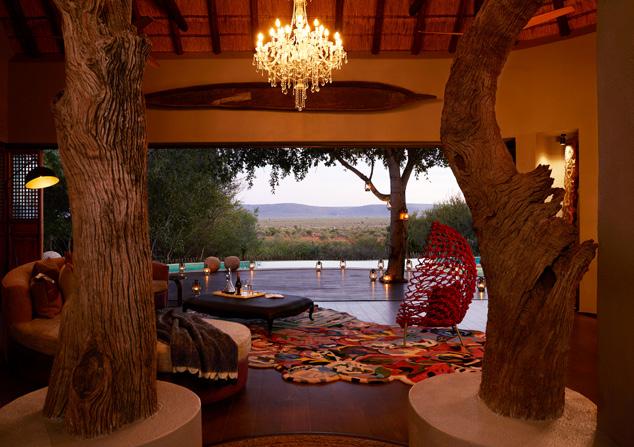

Last but not least, the pinnacle of my trip to Madikwe is the ultra- luxurious Molori Safari Lodge. Jaw dropping. Sensory overload. Otherworldly. They are just a few superlatives which come to mind. Great attention to detail was thought of at Molori. A mixture of classic elegance with contemporary glam throughout has been manifested here. And the consideration to guest surprises like fresh popped corn delivered by butler on a silver tray while out on an afternoon game drive was brilliant and welcomed! Then the private unexpected dinners set up in lovely locations throughout the lodge. Milori outdoes itself.
I would be remiss not to mention the traditional Sundowners which many Safari lodges and camps will offer (think Happy Hour in the bush). Molori not only includes the obligatory gin & tonic with snacks, but they also provide a full bar complete with specialty crafted cocktails and spirits suited to their guests’ tastes. Another stand out Molori staple is homemade granola and yogurt with coffee on morning game drives along with crepes made to order...while at a sunrise stop. And this was all before the full breakfast that was served upon my return to the lodge. And the safari guides at Molori – outstanding! Jerry Ubisi was personable and tenacious when it came to seeking game. When we told him what we wanted to spot, he did it every time! From the lion who was hiding and then revealed himself and then led us all the way to the airstrip, to the cheetah we had seen no other place on this African adventure (but here on Jerry’s watch), to the rare spotted hyena mother and her cubs who one by one emerged from their den in the light of dusk. It could not have been scripted more perfectly.
My last morning at Molori blew my mind. I was served a sumptuous breakfast in yet another pop – up location on property at a dining room with vistas of the outdoor environment. Below this dining room is what is called a “Hide”. It’s an area underground for guests to retreat and view wildlife at their watering hole at eye level. In Molori style, the interior of the hide is comfortable and smartly decorated in safari style, including a gin and whiskey bar to quench one’s thirst. While having a lovely repast, complete with well chilled Cap Classique bubbles, we were alerted to go below and see some special arriving guests. We slipped down the curved stairway. Visualize an amazing family of adult and baby elephants coming to the watering hole to drink. We had a front row seat without these beautiful creatures knowing. It was at this moment that I began to fight back the tears welling up. I was humbled by the fact that in this world of billions of people, how grateful I am to have chosen to be right here on this very spot on the planet?
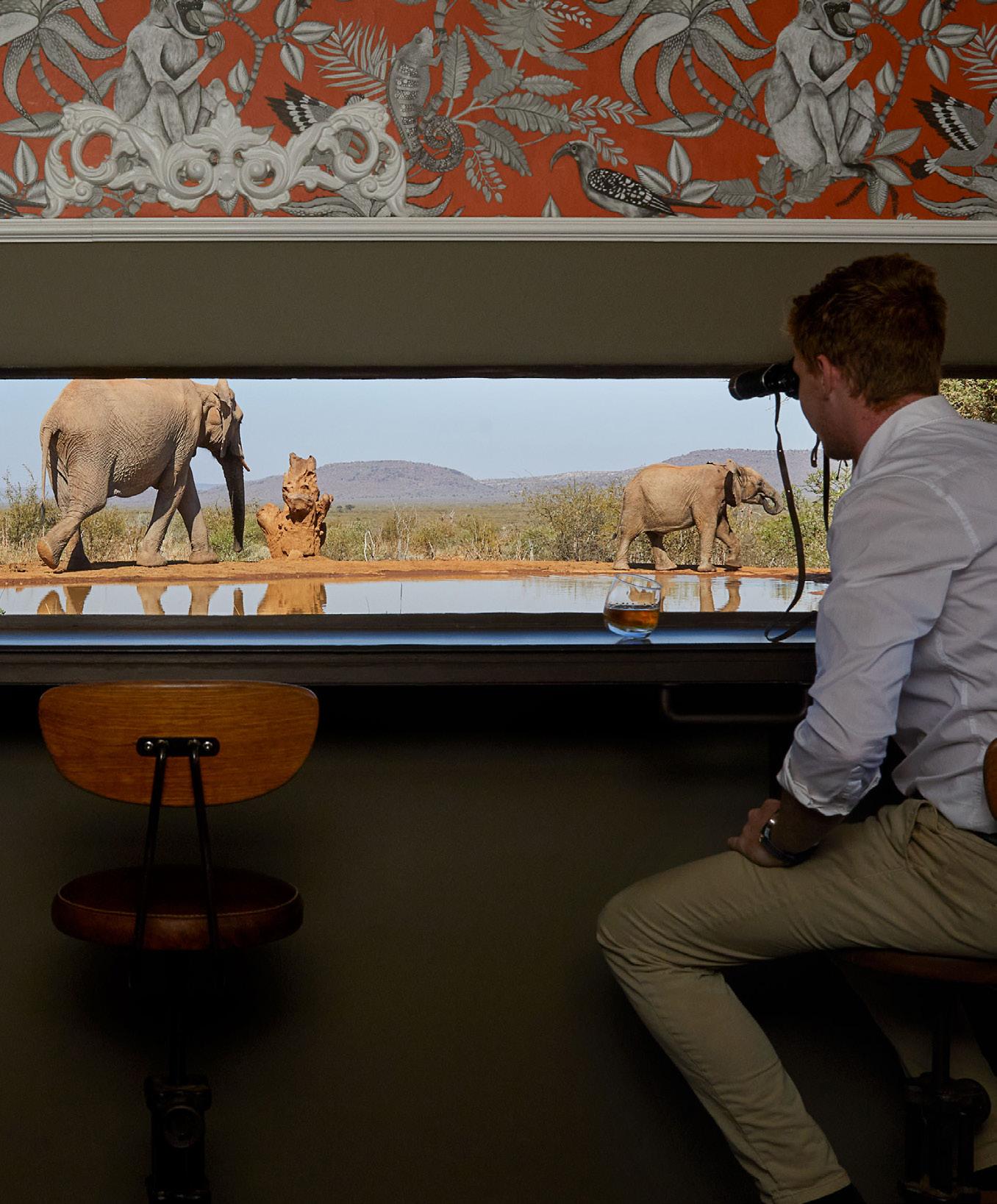
TOP 5 ART GALLERIES IN THE ZANZIBAR ISLANDS
The group of Zanzibar Islands is one of the safest African destinations, even for solo female travelers. If you travel to Zanzibar, make sure to visit one of these art galleries…
DR. BULUGU ART GALLERY
This gallery has a wide range of paintings from local artists. It’s known not only for quality paintings but the owner’s hospitality and art talks.
R5QR+FGF, Changa Bazaar Street.
HELLEN ART GALLERY
The art pieces at this gallery are painted by the proprietors themselves. The medium used is oil on canvas and paper.
R5PP+8X9, Kenyatta Road.
CULTURAL ARTS CENTRE ZANZIBAR
The Centre showcases Zanzibari art, with artists working within its building. Their mission is to provide a space where local artists and artisans can develop, exhibit, discuss and sell their art. The pieces are primarily paintings, jewelry, and crafts.
R5QR+29C, Hamamni Street.
HURUMZI HENNA ART GALLERY
The women of the Hurumzi Henna Art Gallery transform traditional henna body arts into paintings and prints. The gallery also hosts workshops to teach the art.
242 Hurumzi Street.
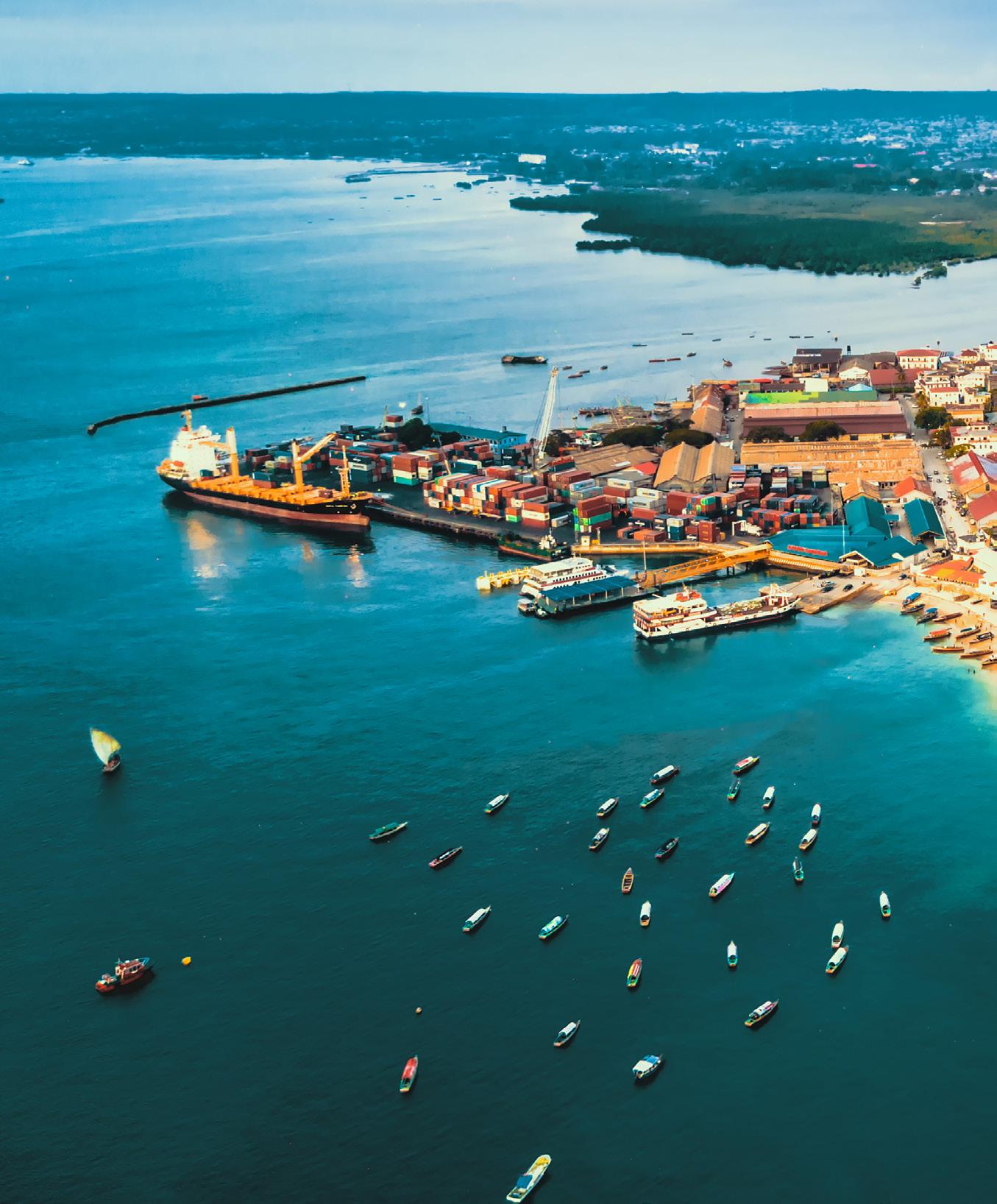
YAWARA MASSAGE & TINGATINGA ARTS
Yawara has a wide range of paintings available for purchase as well as a Japanese chiropractic massage service in its building.
Shangani Post Office, Kenyatta Road.
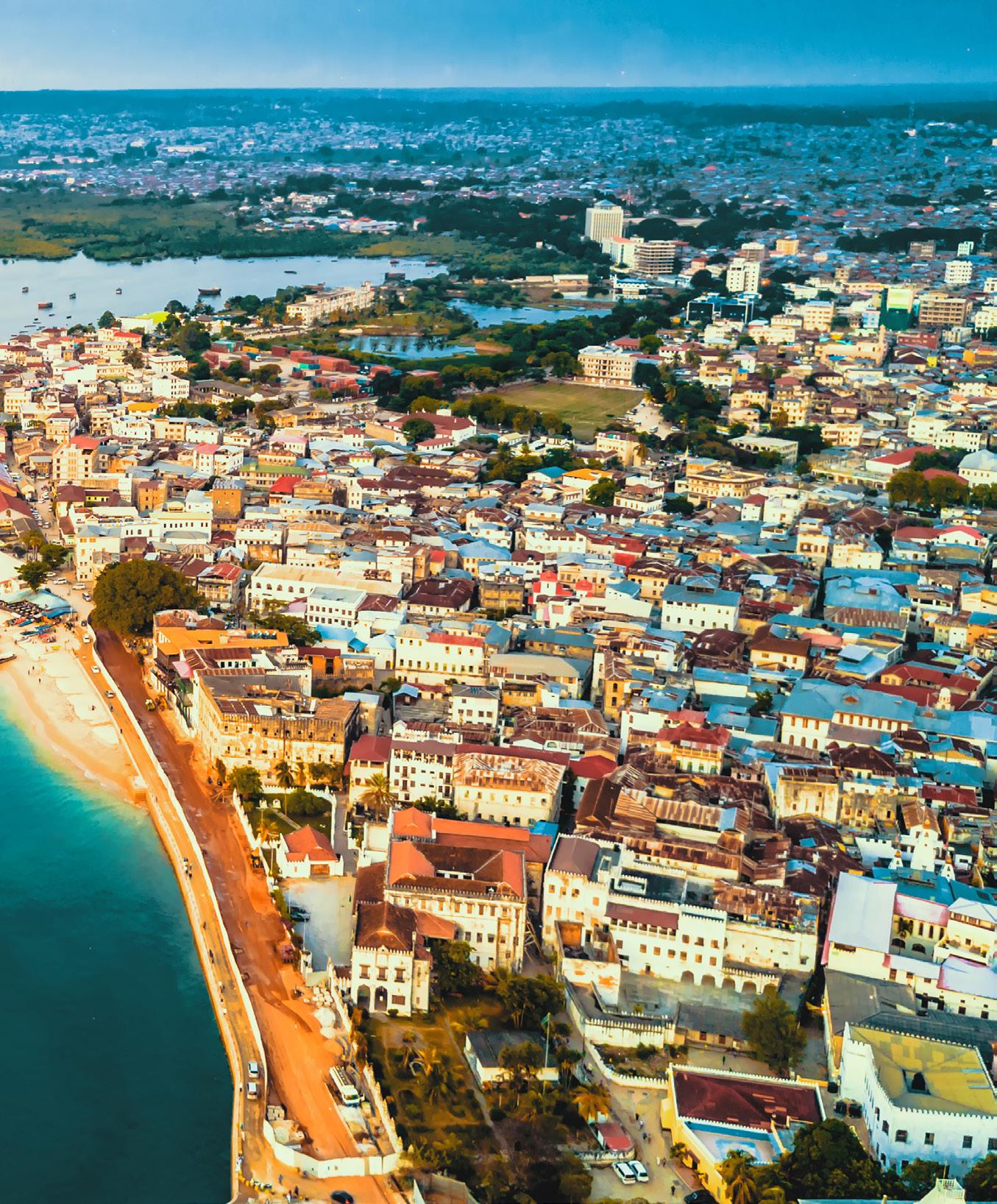
SNAPSHOT
Zimbabwe
Zimbabwe, which means “Houses of Stone” in its native Shona language, is a land of intrigue and amazing wildlife. If you have ever dreamed of taking a photographic safari, make sure to keep reading. John Eric Home sat down with Rowan Lewis, a native Zimbabwean and former photographic safari guide, who shared with us his story and the story of Zimbabwe…
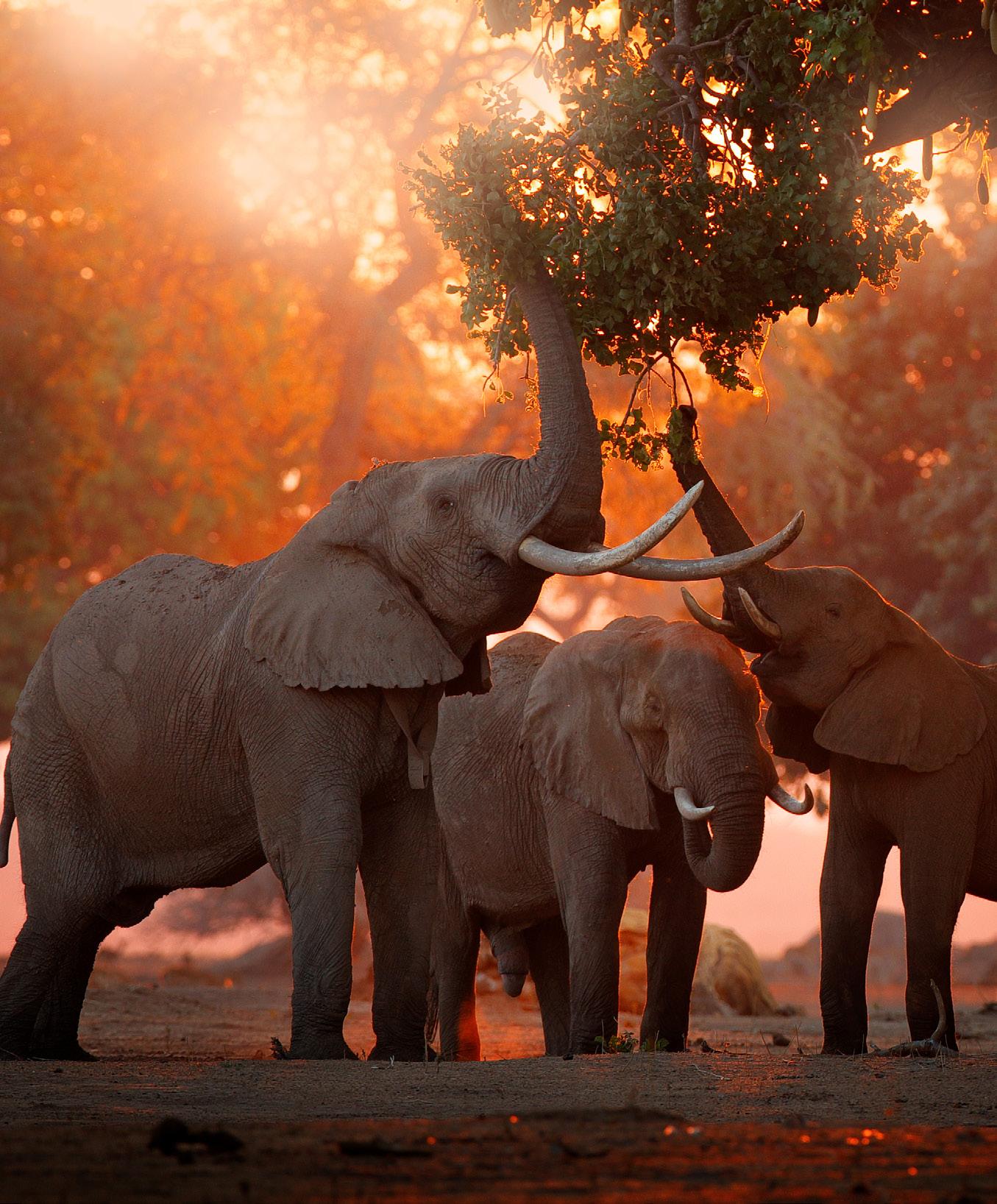
JEH: What would surprise people about Zimbabwe? RL: I think perhaps the most prominent thing would be that in the face of current poverty at the hands of severe political persecution, it is the general joy and peacefulness and kindness of the people. The general populace would stand in stark contrast to what you would expect. The persecution from a – I don’t even know what to call that – a strong handed regime – that has sought to belittle, undermine, and disempower its people to prevent them from having the ability to raise any resistance against the desires of the political upper class. Yet, in the face of that poverty, you will still find hospitality and a welcome – particularly in the rurals – from folks who don’t see you as a threat and will welcome you.
JEH: What was it like growing up in Zimbabwe? RL: A pleasant answer or a difficult answer?
JEH: Both. RL: I grew up amidst what is known as the Rhodesian War. So, I had a guerilla experience as a child on a farm uncertain of the future of each night. I was sent to boarding school at the age of six, followed by my sister a year later, and for the rest of my school career that is where I would spend most weeks. I would come home for the weekends. Fortunately, our experience was not as harmful as many, but we lost many friends during that time.
The war settled in 1980, and as I graduated into high school, peace had been re-established in Zimbabwe. Over the course of the next couple of years my family, as a cattle ranching operation, struggled through two major droughts. The last being in 1987. Even so my father was titled Cattleman of the Year that particular year despite the drought. We ran 3,000 head of cattle, at least 50 horses, and employed over 200 people. The property that we operated was a combination of two ranches. The original my grandfather had started. It was 15,000-acres – courtesy of the British government in the early Southern Rhodesia days. He had come out from Wales and was part of the British South African police. Post Second World War, all servicemen were given the opportunity of receiving substantial support. After my grandfather passed, my dad took over and added 16,000 acres. In the end, we operated on 30,000 acres of land which is about the size of a small county in the United States.
Following the droughts, our 3,000 head of cattle slowly and progressively cut down to 300. By the end of 1987, the decision had been made that we would take up all the internal cattle fences and put them on the outside and concentrate on wildlife. They were the only animals that seemed to survive and recover very well from a drought. And so, we entered into tourism and in particular wildlife management on our land. From 1980 onwards, Zimbabwe had become an attraction on the international map and tourism had grown significantly.
So, for me, growing up through those years – my childhood was spent regularly on the farm, riding horses, rounding up and dipping cattle.
JEH: How did you get into the safari? RL: The safari line was an interesting journey for me. Having converted our cattle ranch into a wildlife estate – it seemed like a natural progression. When I left school in 1987, I tried to go onto college and got sponsored for a year to come to the America. It was a bit overwhelming for a small African country boy. I returned to Zimbabwe and found myself in the import/export business for a little while. It turned out to be a good education when it came to the safari side, even though the export desk job was not so suitable for a young, barefooted, outdoor boy. Having not survived very long behind a desk, and in search of an alternative means of income, I was offered the opportunity to go and work at Bumi Hills Safari Lodge up on Lake Kariba. Bumi is a private, wildlife estate that was the residence of what was known as the Presidential Elephant Heard and was one of the topclass safari lodges on Lake Kariba at the time.
Bumi is situated on top of a very large lone hill with a granite outcrop. It is well wooded, surrounded with forests and with a very wide grassy flood plain down to the lake shore. And so, from the top, sitting on the deck of the lodge entertaining clients in the evening, we would be able to watch herds of elephants wandering around the flood plain below. Occasionally binoculars would pick up a lion pride or there would be features of hippos in the lake. We would marvel at the size of a crocodile passing through where someone may have just tried to take a swim. There I cut my teeth as a rookie trainee safari guide.
JEH: How then did it evolve further, meaning what were the steps you needed to take to jump from rookie to professional guide? RL: I needed and got a couriers permit which enabled me to then drive clients in a commercial vehicle to-and-from and through any national park or state-controlled land. With the courier’s license in hand, I found myself up in Kariba and, within a couple of months, I became proficient in handling a speedboat. I then got a coxswain license and was driving an open Land Rover into Matusadona National Park to view incredible herds of almost 800 buffalo which would be followed by a pride of 20 lions. It evolved from there.
JEH: And what were your experiences as a guide? RL: There were many elephant encounters, hippos in the water – but the most unique thing that I remember about that time was taking my speedboat with clients in the early hours of the morning up into the bays of the lake that formed what we called Palm Bay. It was a great place to adventure and with slow meticulous work – checking the wind and doing everything that I had learned as a boy – I would stalk these areas in the mornings and evenings in search of black rhino. And as it would be in the cruel hours of the evening or the very early hours of the morning, almost dawn, we might get a glimpse of what would be a very rare siting. Of a black rhino cow, her little calf under a year at her foot, coming down for a drink in these very secluded and sheltered bays. I got to know probably seven black rhino in that area during those two years. Sadly, on my return three years after that, there was not one left because of poaching and the demand for rhino horn in the Eastern market.
Soon after that – I found myself working in conjunction with private wildlife enthusiasts and landowners to help capture what was left of the black rhino in other areas of the Zambezi Valley and relocate them far inland onto private estates where they would then be better protected. Then, after that I worked with Dad and would go guiding, freelancing for some of the places that I worked with in Kariba. They were wonderful days. Adventure days. Days that I look back on with fondness. To say that it was a dream – I look back and wish that I could give that to my own children, but none of that exists anymore.
JEH: What was one of your treasured memories from this time? RL: One of my fondest memories is of a baby elephant and her mother who had isolated herself for a few days from the herd. I took a casual drive down and found Mom, and while I waited for her, sure enough, out of the scrub came this tiny little baby. The young one was inquisitive. A floppy trunk with not much control, wide eyes, long spiky hairs all over to help her not bump into too much – of course the hairs help with sensitivity – and she got inquisitive of the vehicle. Over the course of the next 10 minutes or so, she ventured closer, and you would hear Mom letting out a little rumble. The little one would have to run back, and then curiosity would take hold and she would come out from between Moms legs and venture even further. Mom called her back. On the third try, she got right up to my vehicle, and while I sat there with no doors on an open Land Rover this tiny little one-week old baby elephant wrapped its not very well controlled trunk around my leg. I was not prepared to touch her in case she let out a squeal. That would cause Mom distrust. The mother watched carefully, gave her baby a chance to overcome her curiosity, and then called her back.
Over the course of the next couple of years, she earned the name of Teapot because she was this tiny little elly with a trunk like a spout I suppose. Years later I heard that she was running with a couple of males and reports came back that she had her own first baby. It was interesting to have that continual follow through on the generations. But elephants are incredible – they have this ability to remember things that are far deeper, far longer and rooted to memory and sense and smell. When I was around, they would all gather and come and pay a visit – extending their trunks over to where I was sitting – and pass by. I could today go back into that same herd and the matriarch and others would remember me. A fascinating experience – they are incredible animals.
JEH: What do safari goers generally want to see? RL: I would say that the majority of safari goers are always out to get the “Big Five”. This is what is marketed as well – if you can carry the big five – it’s good for the brochure and good for the market. So, what are the big five? We start with the higher, larger creatures of course. What everybody wants to see is an elephant. Then we come down to a few others – the rhinoceros, the Cape buffalo, and then the two large cats of Africa – the lion and the leopard. Others have added the hippopotamus because of his reputation of being responsible for more deaths on the African continent than any other creature. What’s interesting about that is that hippos only eat grass. But they will challenge a canoe or a boat when they have lost a fight for another bull and got moved out of his herd. They then pick a fight and will take on a boat.
JEH: What else can you tell us about the hippopotamus? RL: For an herbivore, hippos have taken a difficult time because their habitats and food sources have been overrun by humanity. The encroaching human populations into wildlife zones, particularly along flood plains or water sources that have become agricultural zones. From people who then defend their crops from the typical wildlife that would have eaten there for centuries. And so, the human/ wildlife conflict continues.
JEH: What’s the most amazing thing that you have ever seen? RL: There are many amazing things… This may not seem amazing per se, but as someone who studies wildlife, one of the most fascinating and incredible observations that I ever had was watching elephants. I have watched lions hunting and bringing down animals, crocodiles coming out to catch prey, other creatures giving birth in the wild – but the elephants and this small aspect of the animal’s brain – so similar to ours and perhaps even more intelligent – really blew me away.
I watched as a teenage – maybe 12-year-old – young

female (elephant) interacted with two small elephants. One was perhaps a year old and the other just under. As I observed, it appeared to me that the young 12-year-old had been assigned the duty of babysitting. I watched as she let them get distracted with each other and then purposefully and intentionally tiptoe off about 30 feet away, hide behind a bush, and then wait. And before a minute or so was over, the two babies – realizing that their sibling and friend was not to be found – would squeal, look around, scurry around, and then go in search of her. The confirmation for me that this was a game of hide-and-seek were the absolute squeals of delight exhibited by these two tiny little creatures when they found their 12-year-old sibling or cousin or whatever she might have been. And she would run out back into the open – followed by them at her heels – squealing with glee. They played this game over and over and over. In the course of about 20 minutes, I watched them do this three if not four times. Although elephants have brains pretty much the same as ours, I know that there is such a fascination with these giant creatures. They are gentle giants in their own intimate way with one another – yet – such formidable foes if you run across a mother protecting her children.
JEH: It is not beyond imagination to think that being in the wild, in the animals’ natural territories, there may have been some interesting encounters. How do you negotiate with wild animals? Particularly the lion? RL: Negotiating with a lion comes with success only by understanding what he is thinking. Can we understand what they think? Under certain circumstances. But there are certain times where you choose not to negotiate very much, and avoidance happens to be the better way. If you can’t avoid? Respect distance, understand that all creatures – including ourselves – have an area of personal space. The majority of animals have an understanding of what space is theirs and when to turn on the flight response as opposed to the fight response. A lion, who is a territorial creature, has the respect for a human as a co-existing predator on the planet. So, unless you fall down drunk and avail yourself to them in the middle of the night on the way home, one is usually able to, when confronted, stand your ground – even at a charge – take aggressive steps toward the animal in his charge, and he will usually cost you a pile of dust and stones flung in your direction. But he will stop and brake, growl and roar, and back off a few steps into his own safe distance. While he does that and retreats a little to give you space, it’s right that you should retreat and give him space too.
JEH: You have left the safari behind. What is it that you do now? RL: My background as a guide and in the tourism industry gave me much access to the rural communities of Africa.

Initially my work was from a conservation perspective. Later, with the difficulties of political agendas that have caused the local populaces to go hungry and therefore turn to destruction of the natural environment including the wildlife – I found myself turning to humanitarian work instead. I’ve worked with Doctors Without Borders in Zimbabwe and multiple faith-based organizations in Zimababwe, Zambia, and other African countries around that region.
My background in guiding required me to have extensive medical knowledge. In 2007, I had the fortune of crossing paths with Dr. Frank Hubbel of Solo Wilderness Medicine School out of New Hampshire. He and a team were teaching a wilderness first responder course for a class of missionaries through Overland Missions. I had joined as a volunteer with Overland earlier that January with the intention of working with orphans as a result of HIV/AIDS, which is a prominent problem throughout the region. The goal was to not institutionalize people and to not to create a dependence on the group. To empower them within their families and the social groups that they already have – those are the networks that Africa would have typically used, and it tends to be far better for those communities. In African culture, if we lose a father – his brother becomes our father. If we lose a mother, her sister becomes our mother. We don’t necessarily have aunts and uncles – we have Big Father, Big Mother who are our own – then Little Fathers and Little Mothers. This was a structure that I was trying to encourage through my involvement with this organization.
At the end of 2007 – at the invitation of Dr. Hubble – I came over to the US for seven months and started working directly with Solo. I qualified as a wilderness EMT and then trained up as an instructor with them. We began developing courses for the African rurals because much of the traditional knowledge and skills of health that would have been typically passed down through the generations have been lost. People had either moved away because of financial needs or had passed away because of this disease. So, we developed what we call the Village Medic Program – and as with Overland – we train by teaching courses and having them instruct with us in the local villages with schoolteachers and social services and clinicians and anyone that has some sense of prominence and permanence in those areas. We have instructors on multiple continents – from the South Pole up to Norway, as far away as Japan, and as close as Canada and South America. The original Solo continues to run courses in wilderness first aid, wilderness first responder, wilderness EMT for outdoor enthusiasts and professionals in North America. But Dr. Hubble and I over the last couple of years have been developing the international educational base by identifying the international need and developing partners in those particular regions who are willing to take it on and make good use of it. Since Covid came and put a stop to our international travel – we developed online resources. Currently, we are in the developmental stage of training trainers in their own individual countries and in their own language. These folks will have the tools and knowledge and skills – so that simply with what’s in their backpack, they can not only save lives but promote healing and recovery.










